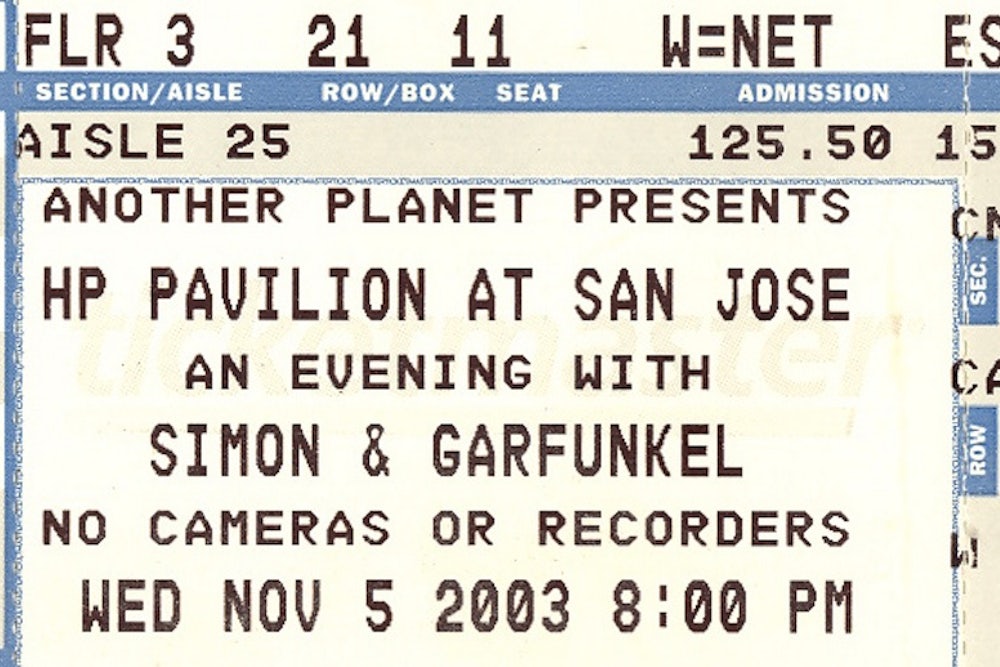On June 17, 1973, when I was nine years old, I attended a New York Mets baseball game with my family. I know the date because I saved the ticket stub, just as I did with all my ticket stubs when I was growing up (not just for ballgames but also for rock concerts, the circus, and so on). I still have all of them in an envelope. Many of the stubs are small masterpieces of graphic design, a sub-niche of aesthetics unto themselves.
Forty years later, almost to the day—June 13, 2013—I attended another Mets game, this time with a big group of friends. Here's what my ticket looked like for that one.
It's unlikely that I'll be saving the more recent ticket. For one thing, I no longer save my tickets like I did when I was a kid. But even if I were still inclined to save such things, the 2013 ticket isn't a particularly pleasing keepsake. It's printed on an ordinary sheet of paper, it has no design flourishes other than the Mets logo, and it isn't very official-seeming. The fact that the Mets felt the need to emblazon it with the words "THIS IS YOUR TICKET" speaks to how un-ticket-like it is. Like every other ticket these days, it's really just a bar code delivery device. I suppose I might be inclined to save it if something historic had happened at this game — a no-hitter, say, or a single player hitting four home runs—but it still wouldn't have the satisfying feel of something that could be framed or put in an album.
But the 2013 ticket has other things going for it. Like most contemporary tickets, it was purchased via the simple and convenient click of a mouse. It was one of eight tickets that my friend Aaron bought for this game. In the old days, the other seven of us would probably have received our tickets by meeting up with Aaron at a prearranged spot prior to the game, which is the kind of thing that can get messy if one person is running late (and messier still if the person running late is the one who has all the tickets). But that wasn't necessary, because Aaron downloaded the tickets as PDFs, so he just emailed a PDF to each of us, we all printed them out, and then we met up at our seats inside the stadium. Much easier than the old way.
On the surface, this seems like a fairly conventional story: Technology provides greater convenience but a certain degree of charm and romance are lost in the process. Some folks may think that's a worthy exchange; others may bemoan it. Either way, it's a familiar trade-off that's hardly limited to the world of tickets.
But I think the ticket example has another wrinkle. I wasn't the only kid who saved ticket stubs back in the day. But are today's kids saving their PDF printouts? I doubt it. Moreover, many events now allow your ticket to be scanned directly from your smartphone or other mobile device, which means there's no physical ticket to save even if you want to.
So the real cost of digital ticketing isn't just the loss of nicely designed physical items. It's also the loss of documentation, the loss of personal totems that serve as touchstones to past experiences. Of course, digital tickets are documented too, since every ticket purchase and turnstile scan ends up on a hard drive or server as more data to be mined. But that's not the same as having an envelope full of stubs that you can pull out of the drawer whenever you like.
Tickets aren't the only keepsakes that have made the leap from analog to digital. Fifteen years ago, you probably pasted your vacation photos in an album; now you probably arrange them into sets on iPhoto or Flickr, or maybe just on your phone's camera roll. I do all of those things myself, and I'm fine with it. But at least a digital photo looks like a printed snapshot. It may not be the same thing, but you can experience it and interact with it in a roughly equivalent way. The same can't be said for digital ticket stubs or their paper printouts, which makes me wonder if any nine-year-olds who attended that recent game on June 13 will have a record of the experience 40 years from now. The answer may tell us a lot about how future generations document and remember their lives.
Do you know of a new product, service, design, or phenomenon that deserves a closer look? Send tips, samples, press releases, and best intentions here, and follow One-Man Focus Group on Twitter.
Paul Lukas specializes in writing about small, overlooked details. His media projects include Uni Watch, which covers the world of sports uniforms and logos; Permanent Record, which is about the stories behind found objects; Show and Tell, which is just like you remember it from second grade.
